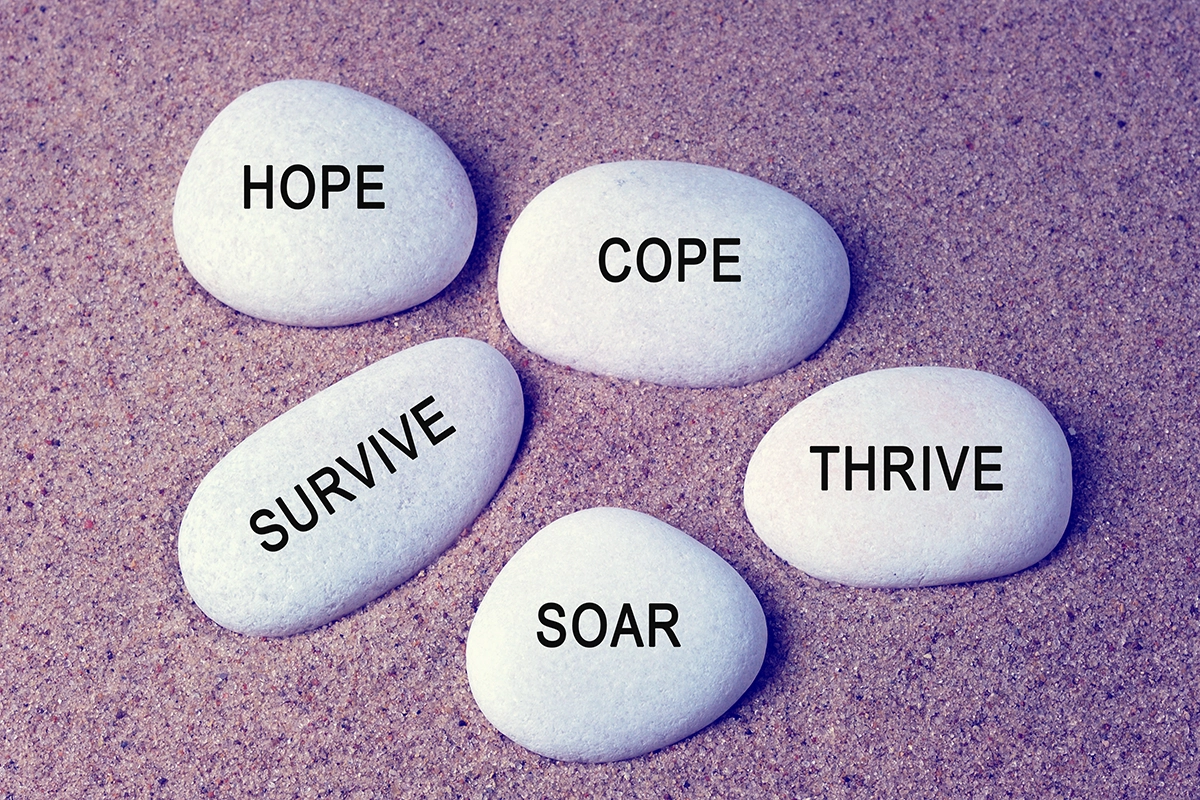Coping vs. Releasing: Navigating the Tightrope of Difficult Truths
Life throws us curveballs. Sometimes, these curveballs come in the form of harsh realities, truths that challenge our understanding of ourselves or the world. When faced with such realities, we often find ourselves on a tightrope between two seemingly opposing forces: coping and releasing.
Coping, at its core, is about managing the emotional impact of a difficult truth. It’s the toolbox we use to navigate discomfort. It can involve strategies like distraction, emotional suppression, or positive reframing. These strategies are not inherently bad; they provide a buffer zone, allowing us to process the truth bit by bit.
Imagine discovering a long-held belief you cherished is based on a misunderstanding. The initial shock can be overwhelming. Denial might be a natural coping mechanism, a way to shield yourself from the immediate pain. However, coping mechanisms become problematic when they become long-term solutions, preventing us from fully engaging with the truth.
Releasing, on the other hand, is about actively acknowledging and understanding the truth. It involves dismantling limiting beliefs and integrating the new information into our worldview. This process often necessitates introspection and potentially uncomfortable emotions.
While coping seeks to manage discomfort, realising embraces it as a catalyst for growth. It’s about opening ourselves to the possibility of a more nuanced understanding, even if it means letting go of cherished ideas.
The tightrope analogy is apt because both coping and realising are essential for navigating life’s challenges. We need coping mechanisms to deal with the initial shock of difficult truths. However, dwelling solely in this space can hinder our long-term growth. Here’s where realising becomes crucial.
Let’s delve deeper into the strengths and limitations of each approach:
Strengths and Limitations of Coping
Strengths:
- Provides temporary comfort: When faced with overwhelming emotions, coping mechanisms offer a sense of control and a way to maintain emotional stability.
- Allows for gradual processing: Not everyone can handle harsh truths head-on. Coping can offer a bridge, allowing us to process the information in smaller doses.
- Necessary for mental health: In times of crisis, coping mechanisms can be invaluable tools for preventing mental breakdowns.
Limitations:
- Can lead to avoidance: Prolonged use of coping mechanisms can prevent us from truly addressing the root cause of the discomfort.
- Hinders growth: By avoiding the full force of a difficult truth, we may miss opportunities for personal growth and perspective shifts.
- Can be maladaptive: Some coping mechanisms, such as substance abuse or self-harm, are ultimately destructive and need to be replaced with healthier approaches.
Strengths and Limitations of Releasing
Strengths:
- Promotes growth: By confronting difficult truths, we open ourselves up to learning, expanding our worldview, and becoming more resilient.
- Empowering: Realising grants us a sense of agency and control over our thoughts and beliefs. We become active participants in shaping our understanding of ourselves and the world.
- Improves relationships: When we base our interactions on truth and understanding, our relationships become more genuine and fulfilling.
Limitations:
- Can be emotionally intense: Engaging with harsh truths can be emotionally challenging and sometimes overwhelming.
- Takes time and effort: Realising requires dedication and a willingness to explore uncomfortable emotions.
- Can be isolating: Facing uncomfortable truths can sometimes lead to questioning our place in the world, creating feelings of isolation.
Finding the Balance: From Coping to Releasing
So, how do we navigate this tightrope between coping and realising? Here are some tips:
- Acknowledge the Need for Both: Both coping and realising are valid approaches. Recognise that there will be times when you primarily need coping mechanisms to manage the initial shock. However, don’t let this become your default mode.
- Set a Time Limit: When using coping mechanisms, set a time limit. Acknowledge you’re using them as a temporary buffer and plan to move towards realising when you’re ready.
- Seek Support: Facing difficult truths can be isolating. Don’t be afraid to reach out to friends, family, a therapist, or a support group for guidance and encouragement.
- Practice Self-Compassion: Realising can be emotionally challenging. Be kind to yourself throughout the process. Accept that there will be setbacks, but don’t let them derail your progress.
- Celebrate Small Victories: Acknowledge every step you take towards realising, no matter how small. Celebrate the courage it takes to confront difficult truths.
- Focus on Growth Mindset: Instead of viewing difficult truths as setbacks, see them as opportunities for personal growth. Embrace the possibility of becoming a wiser and more resilient version of yourself.
Conclusion
The journey from coping to relseasing is not linear. There will be times you revisit old coping mechanisms, and that’s okay. The important thing is to maintain a forward momentum, striving to engage with the truth in a healthy and progressive way.
Remember, growth rarely happens in comfort zones. Difficult truths, while unsettling, can be the seeds of positive change. By embracing both coping and releasing, we navigate the tightrope of life’s challenges, ultimately emerging with a stronger understanding of ourselves and the world around us.
For more information on Coping vs Realising contact Breakthrough Leadership.
